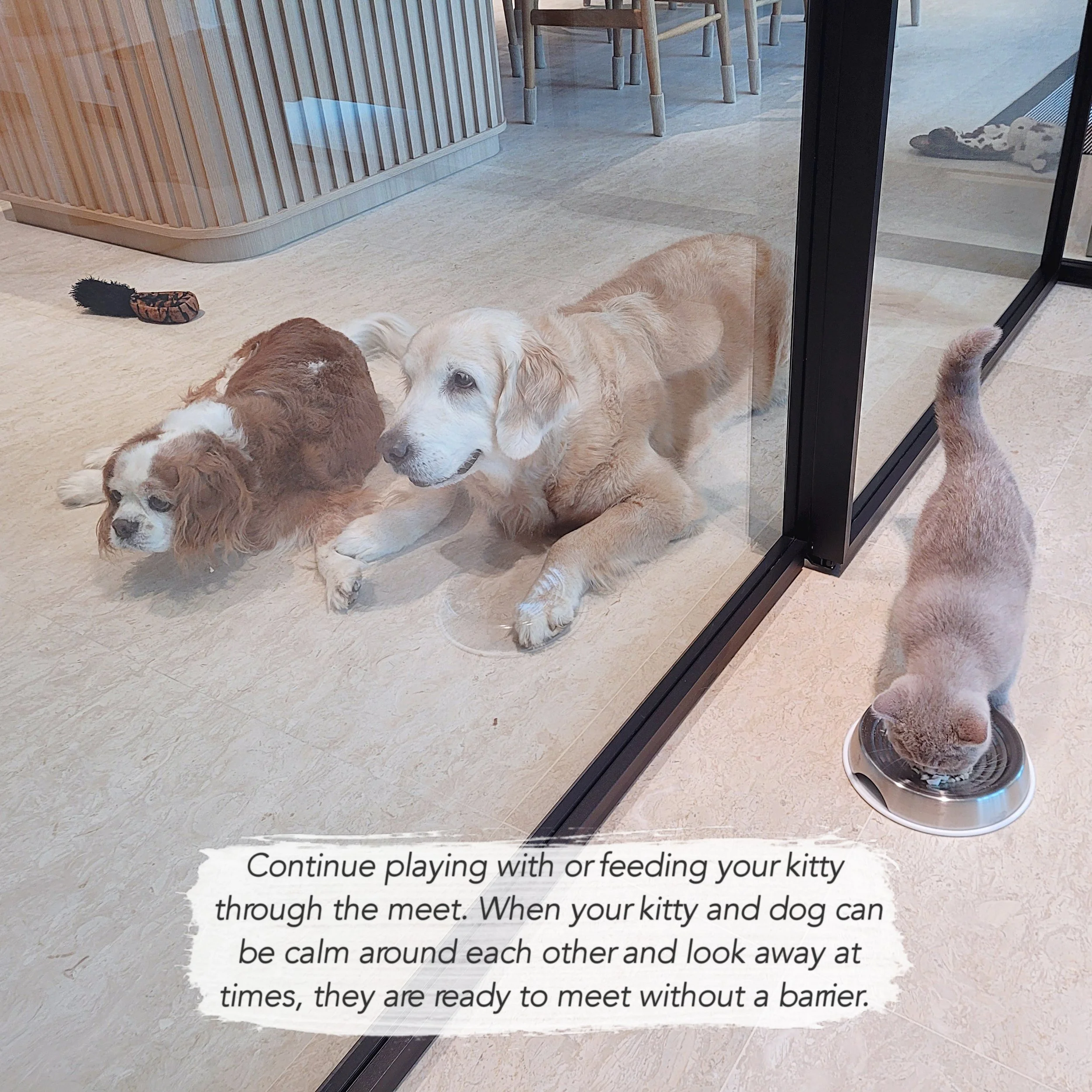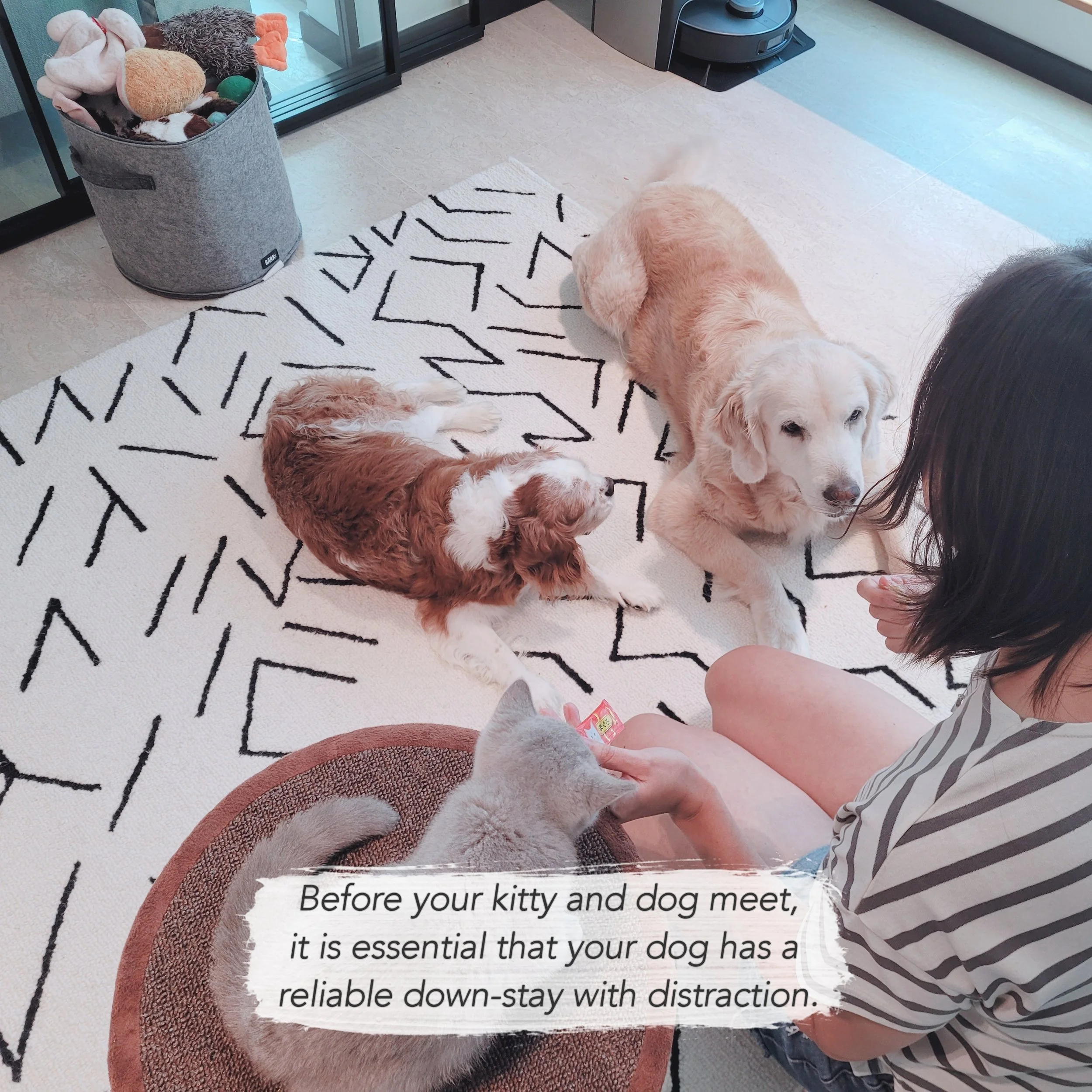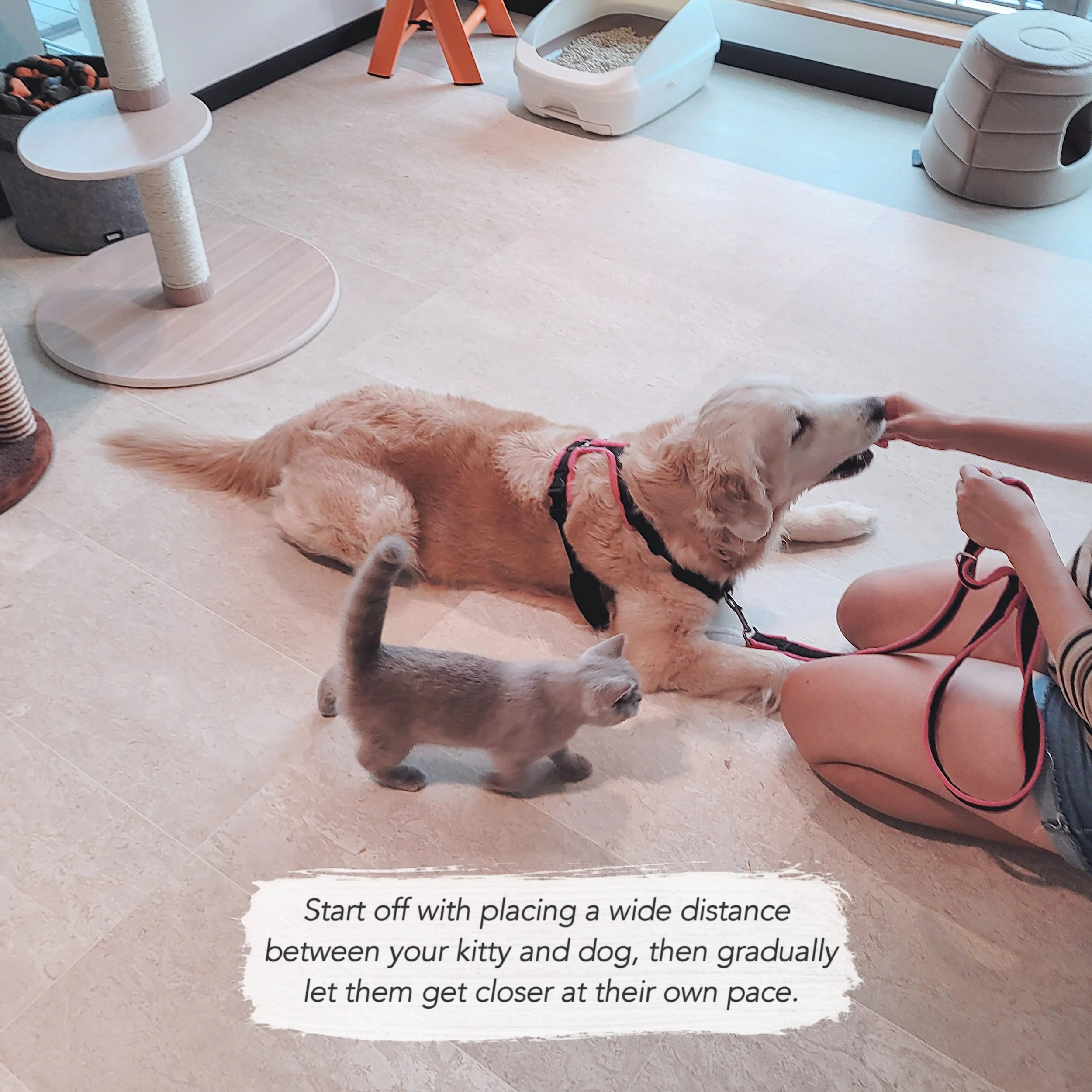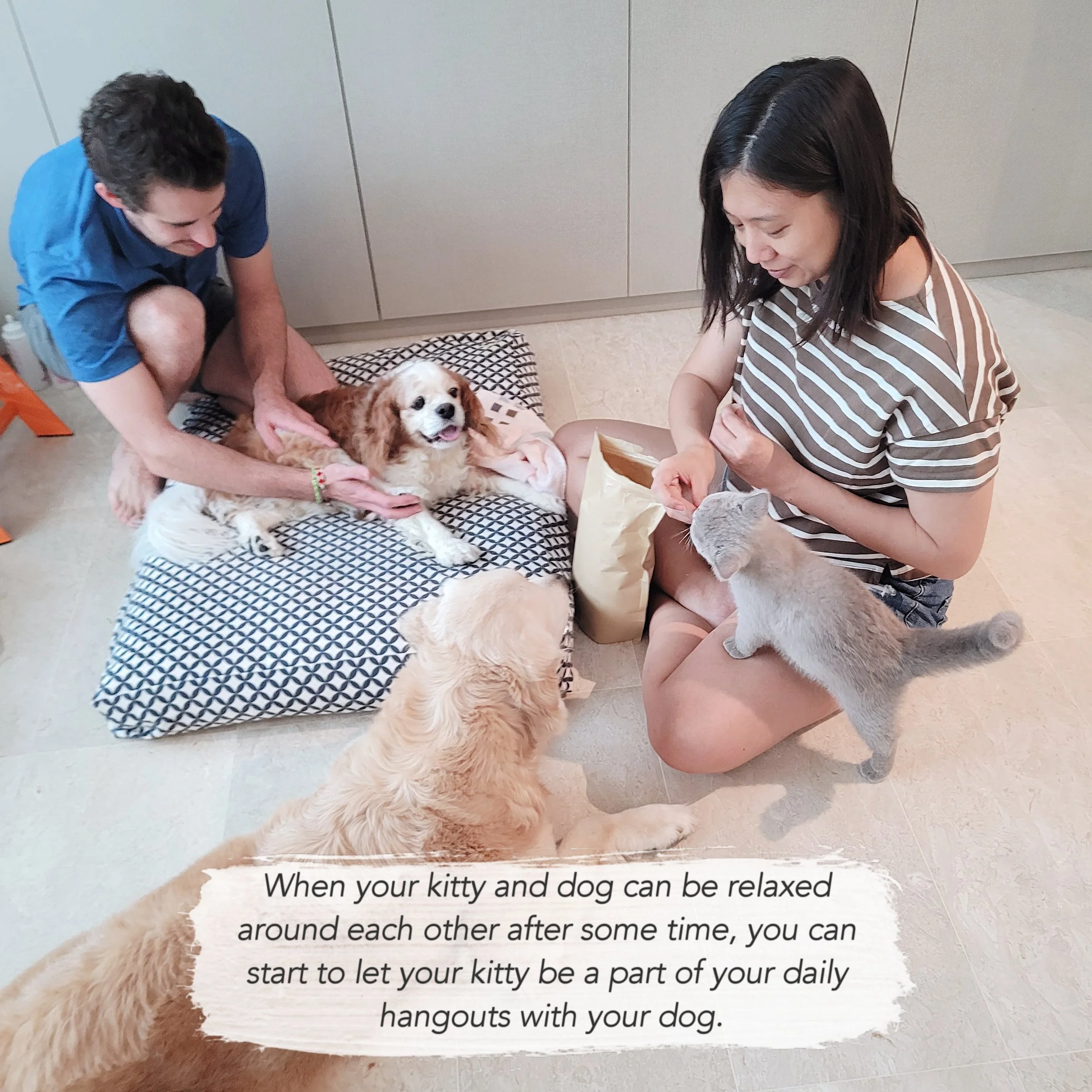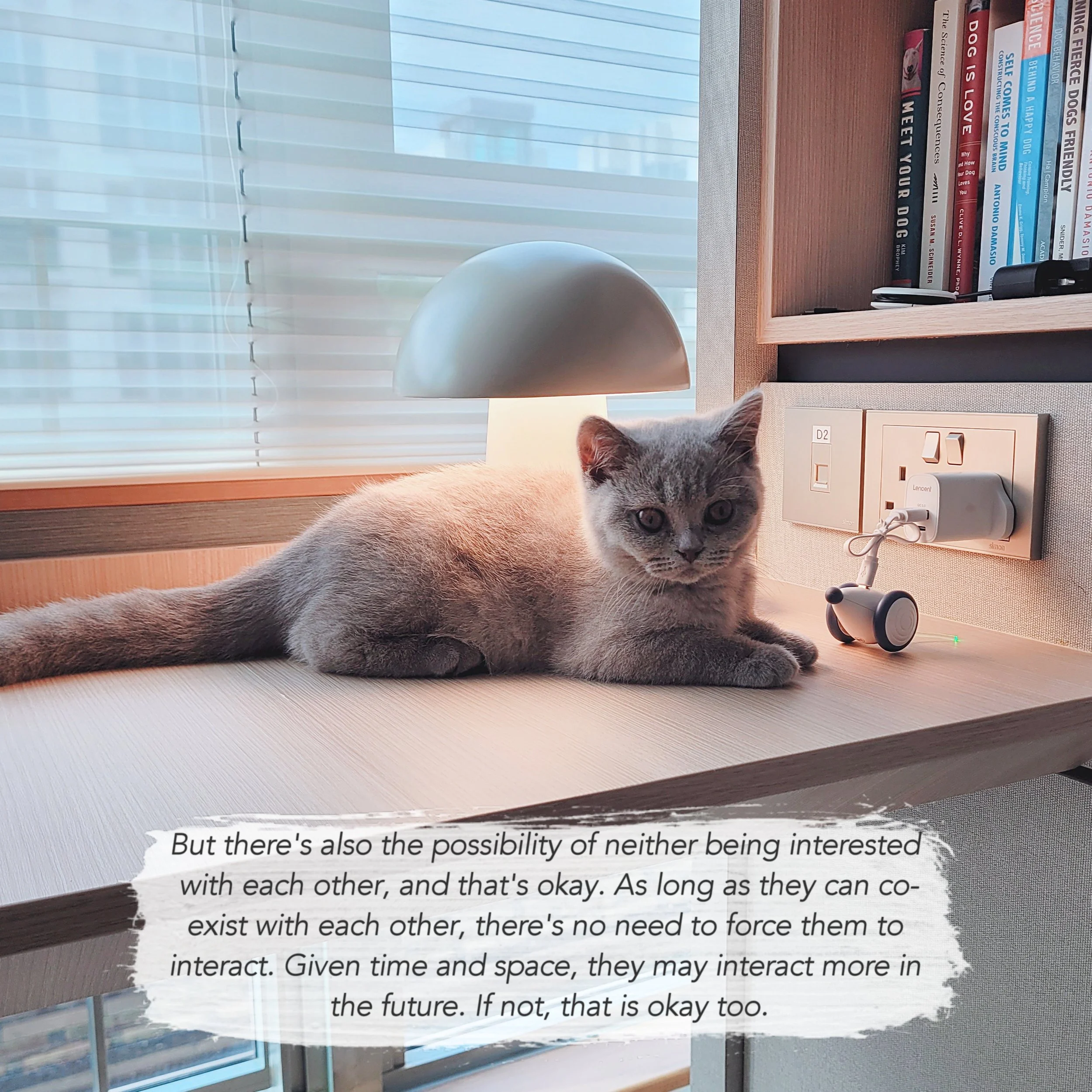Introducing your new kitty to your dog(s)
Wondering if it’s possible for your dog to get along with your new kitty?
The short answer is, yes.
As long as the introduction phase is conducted carefully and at your pets’ pace, the chances of living under one roof harmoniously is increased. The goal is for your pets to be able to coexist in a shared living space, even if they may not have any interest in interacting with each other.
Have you prepared your house and the necessary items to welcome your new kitty?
Read through this article and check the preparations you’ve done off our list!
Upon reaching your place, set your kitty in the space or room you’ve prepared for them. Give them a some time to get used to their new environment before introducing new things to them to reduce any possible stress as much as possible. It could take a few days or more, so proceed with their pace.
Once your kitty is comfortable in their space, you can begin introducing your pets through scent swapping. This is done through exchanging their belongings to get them familiar with each others’ scents before physically meeting. Doing so will increase the chances of your kitty and dog being able to accept each others’ physical presence when the time comes.
Step 1: Exchange their beddings or toys.
Take an item from your kitty’s and dog’s bedding and swap them. Observe their reactions. If either one reacts negatively (such as avoiding or hissing/growling at the item), then you will need to slow down the scent swapping process. If they’re able to relax with the item, you may swap the items back to further mix their scents.
Step 2: Allow them to explore each others’ spaces.
When both your kitty and dog do not display any adverse reactions to each others’ scents, you can let them explore the other’s space separately. You may either take your dog out or put them in another room with someone while your kitty inspects your dog’s space.
Repeat the process with your dog with your kitty in a safe space, such as in another room with someone, or their carrier (if they are accustomed to being in one).
Step 3: Introducing visual contact.
When both your kitty and dog are able to relax fully in general, you may begin letting them see each other through a physical barrier, such as a playpen, screen door or gate that neither can squeeze through. A blanket can be placed over the barrier for their first meeting. If you have more than one dog, introduce visual contact one dog at a time through the same process.
You may feed your kitty treats or play with them to create positive and pleasant feelings during the meet, whichever your kitty prefers more. A toy can also be given to your dog so their attention is on the toy, giving your kitty time to observe the situation and get comfortable.
When both your kitty and dog are calm, you can remove the visual barrier. Continue feeding or playing with them. Once they are able to look away during the meet, they are ready to meet without the barrier.
This process could take a few days, weeks or months. Be patient and go at your pets’ pace!
Step 4: Introducing supervised physical contact.
Before the meet, it is essential that your dog has a reliable down-stay, or other basic cues such as “sit” or “leave it”. This will help your kitty feel safer, as it reduces the chances of your dog acting unpredictably when they meet. If your dog is very energetic, you can go on a long walk or play with them prior to help expend their energy.
Ensure that your kitty has enough space to retreat, hide or climb up a tower if they wish to. Keep your dog on a harness or leash for their first few physical meetings too.
The initial meets can be kept short to increase the positive associations between both pets. Start off with putting a wide distance between your kitty and dog, and let your kitty get closer to your dog and you at their own pace.
The length and frequency of the supervised meets can be increased over time gradually, as long as both your kitty and dog can be calm around each other. Never force them together, and stop the meet immediately if either one shows discomfort or negativity.
Step 5: Integrating your kitty into your daily activities.
Once there are no more adverse behaviours from both your kitty and dog, you can slowly integrate your kitty into your daily activities with your dog, such as watching television or playing together. This will help your kitty be more comfortable and confident in your house.
Meetings should still always be supervised, especially if there is a big size difference between your dog and kitty. It is also important to provide spaces where your kitty can retreat to or hide in different parts of your house, such as towers or cubby holes.
There is a possibility that neither your kitty nor dog wishes to interact with each other even though the introductions have gone smoothly. Not to worry — you haven’t done anything wrong! By getting the introductions done properly, you’ve helped to shape your pets’ perceptions of each other, which also reduces their stress levels in the long run, since they now share the same living space.
Ultimately, the goal of introducing and familiarising them is for them to coexist under one roof peacefully. It is up to your pets to decide whether they want to interact with each other or not.
A final note:
If you’re experiencing difficulties getting through the introduction process, or your pets are not responding positively, do seek professional help. Your vet may be able to give you some advice or refer you to a qualified behaviourist.










